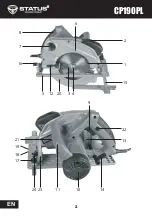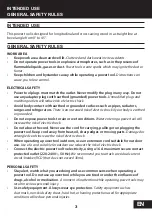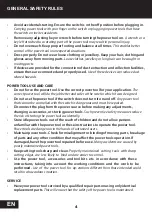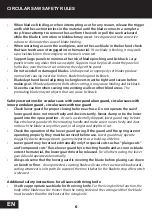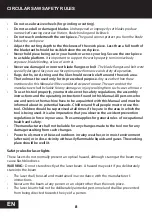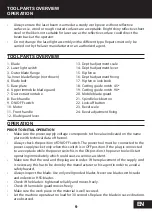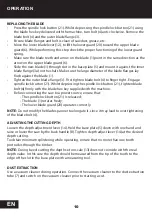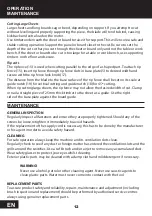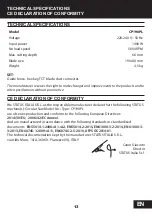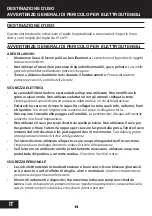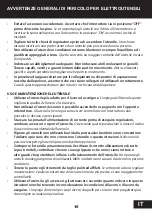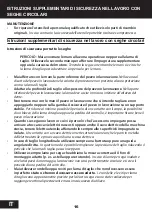
3
INTENDED USE
GENERAL SAFETY RULES
INTENDED USE
GENERAL SAFETY RULES
EN
This power tool is designed for longitudinal and cross sawing wood in a straight line at
bevel angle from 0° to 45°.
WORK AREA
•
Keep work area clean and well lit.
Cluttered and dark areas invite accidents.
•
Do not operate power tools in explosive atmospheres, such as in the presence of
flammable liquids, gases or dust.
Power tools create sparks which may ignite the dust or
fumes.
•
Keep children and bystanders away while operating a power tool.
Distractions can
cause you to lose control.
ELECTRICAL SAFETY
•
Power tool plugs must match the outlet. Never modify the plug in any way. Do not
use any adapter plugs with earthed (grounded) power tools.
Unmodified plugs and
matching outlets will reduce risk of electric shock.
•
Avoid body contact with earthed or grounded surfaces such as pipes, radiators,
ranges and refrigerators.
There is an increased risk of electric shock if your body is earthed
or grounded.
•
Do not expose power tools to rain or wet conditions.
Water entering a power tool will
increase the risk of electric shock.
•
Do not abuse the cord. Never use the cord for carrying, pulling or unplugging the
power tool. Keep cord away from heat, oil, sharp edges or moving parts.
Damaged or
entangled cords increase the risk of electric shock.
•
When operating a power tool outdoors, use an extension cord suitable for outdoor
use.
Use of a cord suitable for outdoor use reduces the risk of electric shock.
•
Connect the electric power tool to electricity, using a 16 A maximum secure contact
protected outlet (220-240V~, 50 Hz).
We recommend you to attach a residual current
circuit-breaker (RCD) that does not exceed 30mA.
PERSONAL SAFETY
•
Stay alert, watch what you are doing and use common sense when operating a
power tool. Do not use a power tool while you are tired or under the influence of
drugs, alcohol or medication.
A moment of inattention while operating power tools may
result in serious personal injury.
•
Use safety equipment. Always wear eye protection.
Safety equipment such as
dust mask, non-skid safety shoes, hard hat, or hearing protection used for appropriate
conditions will reduce personal injuries.


